Click on images to enlarge
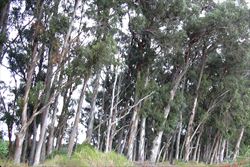
habit (Photo: Forest and Kim Starr, USGS)
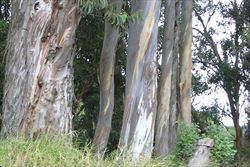
main trunks (Photo: Forest and Kim Starr, USGS)
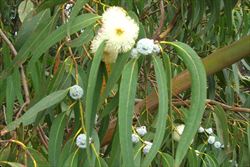
leaves and flowers (Photo: Forest and Kim Starr, USGS)

close-up of flower buds (Photo: Forest and Kim Starr, USGS)
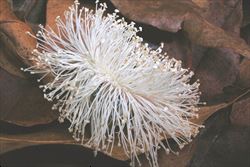
close-up of flower (Photo: Forest and Kim Starr, USGS)
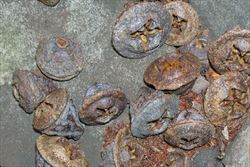
close-up of mature fruit (Photo: Forest and Kim Starr, USGS)
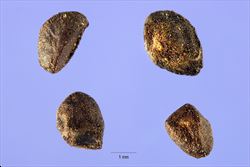
close-up of seeds (Photo: Steve Hurst at USDA PLANTS Database)
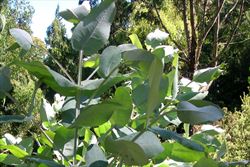
sapling with broader bluish-green leaves (Photo: Forest and Kim Starr, USGS)
Scientific Name
Eucalyptus globulus Labill. subsp. globulus
Synonyms
Eucalyptus gigantea Dehnh. Eucalyptus globulus Labill. var. globulus
Family
Myrtaceae
Common Names
blue gum, bluegum, southern blue gum, Tasmanian blue gum
Origin
Native to south-eastern Australia (i.e. Tasmania, including King Island and islands of the Furneaux group, and the coastal and sub-coastal districts of southern Victoria).
Naturalised Distribution
This species has become naturalised in many parts of southern Australia that are beyond its natural distribution. It is recorded as being naturalised in the coastal districts of south-western and southern Western Australia and in south-eastern South Australia. It is possibly also naturalised in the ACT and beyond its native range in Victoria.
Also naturalised overseas in Europe (i.e. France, Ireland, Spain, Italy and Portugal), south-western USA (i.e. California), and Hawaii.
Notes
Tasmanian blue gum (Eucalyptus globulus subsp. globulus) is one of the most widely cultivated of Australia's native trees. It is cultivated as an ornamental in parks and gardens in many parts of Australia and is also widely grown as a timber tree in forestry plantations in the southern parts of the country. It has escaped cultivation in recent years and is now regarded as an environmental weed in South Australia, the ACT and some parts of Victoria.
In South Australia, Tasmanian blue gum (Eucalyptus globulus subsp. globulus) has become naturalised in the Southern Lofty Mountain Ranges, Northern Lofty Mountain Ranges, Kangaroo Island, and South-East regions. There are also reports that it is becoming naturalised on the Lower Eyre Peninsula (i.e. at Koppio Hills). It is currently of some concern in the Adelaide area, and is listed as an invasive plant in bushland in the Adelaide Hills Council district. There is also the risk of intra-specific crossing of nearby cultivated or naturalised Tasmanian blue gum (Eucalyptus globulus subsp. globulus) plants with the only native population of southern blue gum (Eucalyptus globulus subsp. bicostata) present in South Australia. In theory, this outlying population located at Burra, could become threatened if its genetic pool is contaminated by Tasmanian blue gum (Eucalyptus globulus subsp. globulus).
In Victoria, localised populations of Tasmanian blue gum (Eucalyptus globulus subsp. globulus) frequently occur adjacent to plantings, particularly in moderately to highly disturbed habitats such as roadsides. Hence, this species is sometimes regarded as an environmental weed in those areas outside its native range (e.g. in the Goulburn Broken Catchment). Tasmanian blue gum (Eucalyptus globulus subsp. globulus) has also spread from plantings into native eucalypt woodlands, wetlands and riverine flats in the southern parts of Western Australia.
In California, in south-western USA, Tasmanian blue gum (Eucalyptus globulus subsp. globulus) has invaded coastal grasslands and shrublands, riparian areas and moist slopes. In fact, it is becoming so widespread in the coastal regions of this state, that it is considered to be one of the most invasive pest plants of native vegetation in California.

